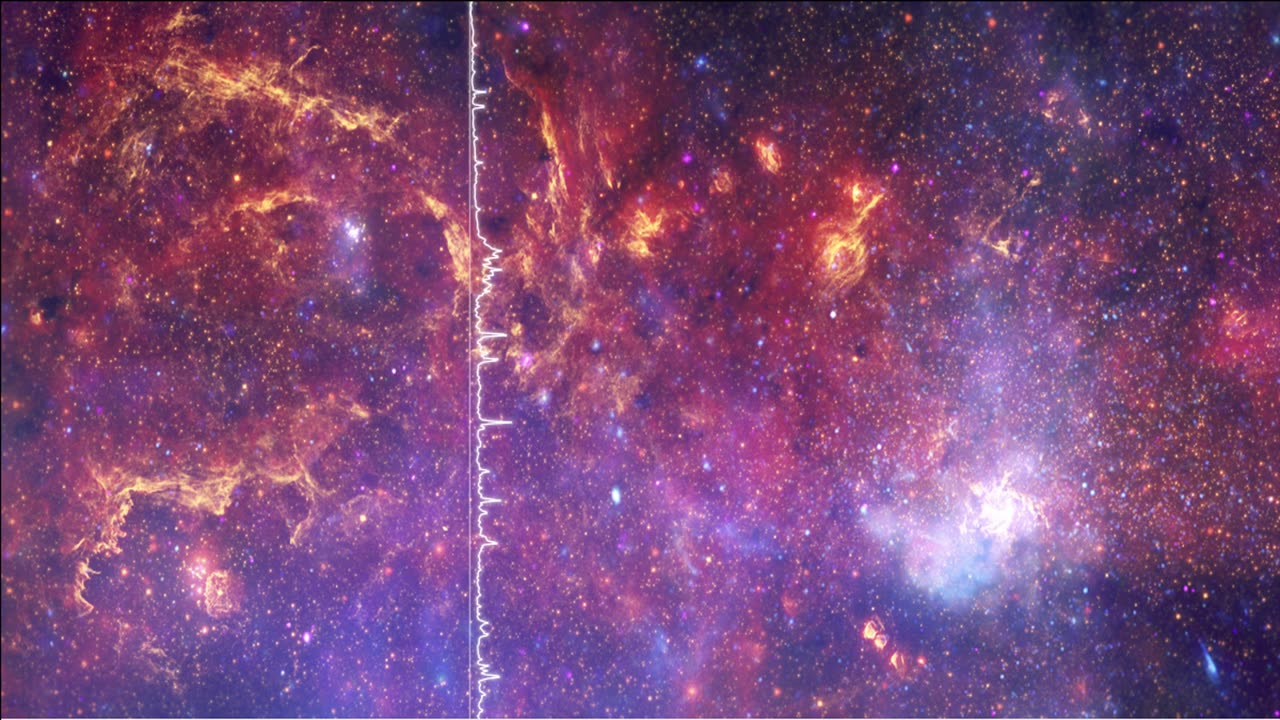Premium Only Content

Data Sonification: Sounds from Around the Milky Way
The center of our Milky Way galaxy is too distant for us to visit in person, but we can still explore it. Telescopes give us a chance to see what the Galactic Center looks like in different types of light. By translating the inherently digital data (in the form of ones and zeroes) captured by telescopes in space into images, astronomers create visual representations that would otherwise be invisible to us.
But what about experiencing these data with other senses like hearing? Sonification is the process that translates data into sound, and a new project brings the center of the Milky Way to listeners for the first time. The translation begins on the left side of the image and moves to the right, with the sounds representing the position and brightness of the sources. The light of objects located towards the top of the image are heard as higher pitches while the intensity of the light controls the volume. Stars and compact sources are converted to individual notes while extended clouds of gas and dust produce an evolving drone. The crescendo happens when we reach the bright region to the lower right of the image. This is where the 4-million-solar-mass supermassive black hole at the center of the Galaxy, known as Sagittarius A* (A-star), resides, and where the clouds of gas and dust are the brightest.
Users can listen to data from this region, roughly 400 light years across, either as "solos" from NASA's Chandra X-ray Observatory, Hubble Space Telescope, and Spitzer Space Telescope, or together as an ensemble in which each telescope plays a different instrument. Each image reveals different phenomena happening in this region about 26,000 light years from Earth. The Hubble image outlines energetic regions where stars are being born, while Spitzer's infrared image shows glowing clouds of dust containing complex structures. X-rays from Chandra reveal gas heated to millions of degrees from stellar explosions and outflows from Sagittarius A*.
In addition to the Galactic Center, this project has also produced sonified versions of the remains of a supernova called Cassiopeia A, or Cas A, and the "Pillars of Creation" located in Messier 16. In Cas A, the sounds are mapped to four elements found in the debris from the exploded star as well as other high-energy data. The distribution of silicon (red), sulfur (yellow), calcium (green), and iron (purple) are revealed moving outward from the center of the remnant, starting from the location of the neutron star, in four different directions, with intensity again controlling the volume. There is also another version with fifth audio path moving along the upper left jet.
-

BEK TV
1 day agoTrent Loos in the Morning - 8/22/2025
10.3K -
 LIVE
LIVE
The Bubba Army
23 hours agoHogan's Death: Bubba Called it FIRST AGAIN! - Bubba the Love Sponge® Show | 8/22/25
2,164 watching -
 38:40
38:40
ZeeeMedia
18 hours agoMax Pace’s Crypto Revolution Story: Four Strategies to Win | Daily Pulse Ep 93
28.5K14 -
 2:16:46
2:16:46
"What Is Money?" Show
2 days agoBitcoin vs War, Violence, & Corruption w/ Gary Mahmoud
25.2K -
 28:33
28:33
DeVory Darkins
1 day ago $9.95 earnedNewsom suffers stunning EMBARRASSMENT as MAJOR retailer makes devastating announcement
33K62 -
 32:46
32:46
Coin Stories with Natalie Brunell
2 days agoInside Look at Strategy’s $70+ Billion Bitcoin Treasury
23.3K1 -
 8:21
8:21
MattMorseTV
18 hours ago $9.26 earnedTrump just SCORED a $500,000,000 LEGAL WIN.
121K47 -
 2:11:05
2:11:05
Side Scrollers Podcast
22 hours agoDISASTROUS Cracker Barrel Rebrand + Destiny PDF Allegations + More | Side Scrollers Live
78.6K30 -
 18:57
18:57
Nikko Ortiz
21 hours agoTexas Stand Your Ground Law
26.4K5 -
 18:55
18:55
GritsGG
15 hours agoFastest Killing Warzone SMG!
18.9K1